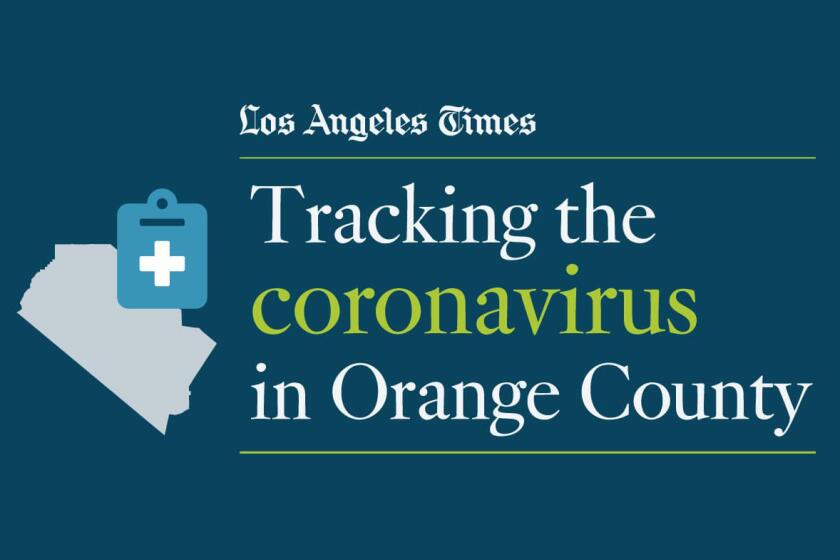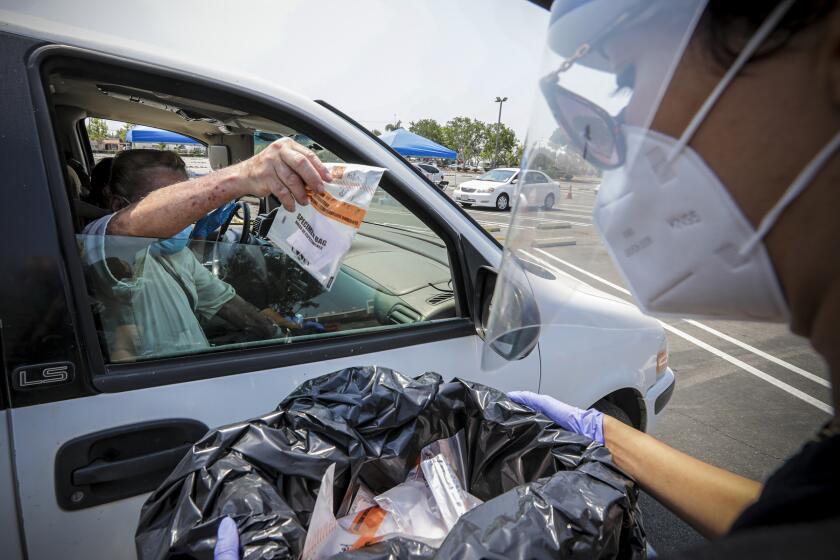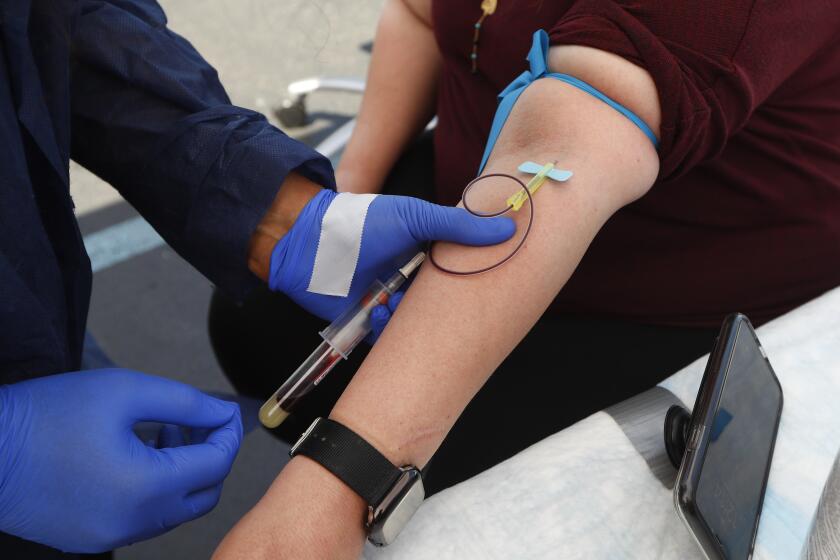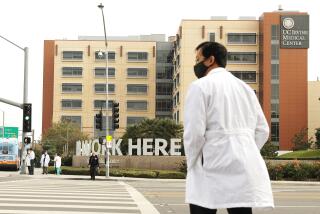Coronavirus is far more widespread in Orange County than reported, study shows
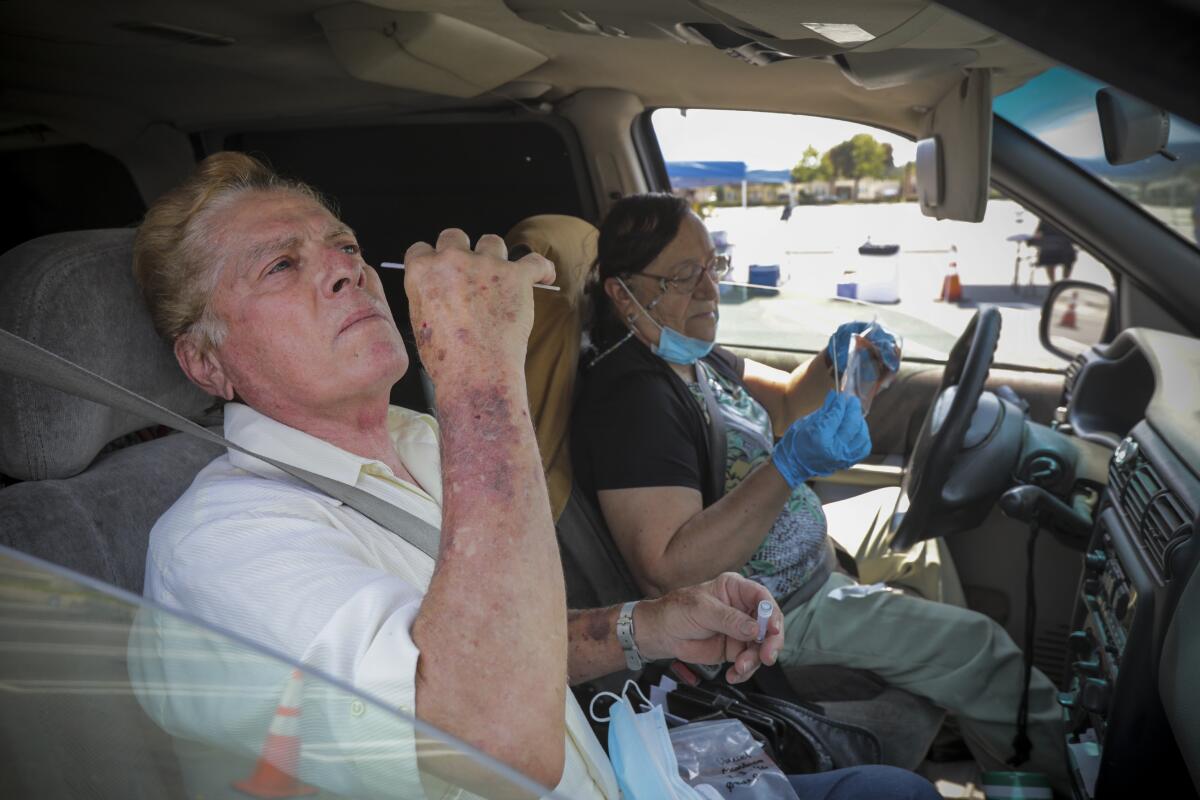
The number of COVID-19 infections in Orange County may be nearly eight times higher than previously thought, a new antibody study suggests.
Although the screening, a collaborative effort between UC Irvine and the O.C. Health Care Agency, demonstrates that the coronavirus may be far more widespread — though less deadly — than official numbers indicate, researchers said more work is needed to understand the level of protection that antibodies provide and how best to address disparities in how the virus affects different populations.
The Latinx experience chronicled
Get the Latinx Files newsletter for stories that capture the multitudes within our communities.
You may occasionally receive promotional content from the Los Angeles Times.
“Our study demonstrates that, while a significant number of O.C. residents were already exposed and developed antibodies to COVID-19, much of the county still remains vulnerable to the virus,” Bernadette Boden-Albala, director of the university’s Program in Public Health, said in a statement. “For researchers, there is a lot more work to be done.”
From July 10 to Aug. 16, nearly 3,000 county residents were tested for an array of coronavirus antibodies, which are produced as part of the body’s natural immune response to a virus.
Of those screened, 11.5% were found to have antibodies for COVID-19.
“There was this lurking suspicion that there’s a large fraction of people who have had it that did not know,” Tim Bruckner, an associate professor of public health at UCI, said in a statement. “Either they had symptoms and did not seek care, or they did not have symptoms and had no reason to go.”
The latest maps and charts on the spread of COVID-19 in Orange County, including cases, deaths, closures and restrictions.
As of Aug. 16 when the study finished collecting samples, the county had an official coronavirus case count of 46,057.
That figure represents 1.44% of the county’s population of nearly 3.2 million. An 11.5% infection rate, which is nearly eight times as high, would equate to more than 367,000 cases.
A total of 59,442 have been infected and 1,468 people are known to have died from COVID-19 in Orange County to date.
Health officials and researchers have previously said that the true number of those infected by the coronavirus likely outpaces confirmed cases, as many people may not have gotten tested or needed medical attention.
“I think it would just confirm our predictions that transmission is in the community and that there are people who are walking around asymptomatic and, if they don’t get tested, we don’t know,” Dr. Clayton Chau, county health officer and Health Care Agency director, said during a media briefing Thursday. “That’s why we encourage people to get tested, especially essential workers.”
The latest study also reflects previously noted disparities regarding COVID-19 infection. Researchers said the highest prevalence of antibodies was found among Latino residents, 17%, and low-income residents, 15%.
The heavily Latino cities of Santa Ana and Anaheim have coronavirus positive test rates significantly higher than the overall rate in Orange County.
Boden-Albala said that the greater prevalence among Latinos “is consistent with some of the testing and hospital data that has come out of Orange County and nationwide” and that “as we look toward the fall and flu season, this data also justifies enhanced planning and resources in communities likely to be hit hardest.”
Hispanic and Latino residents account for roughly 48% of Orange County’s confirmed coronavirus cases for which that demographic information is available, and 43% of total deaths — even though they make up only 35% of the region’s population, according to Health Care Agency data.
Chau said the study’s findings further illustrate that the county needs to be laser-focused on tackling disparities in healthcare.
While those issues are not new, nor are they unique to Orange County, Chau said that “the pandemic truly brings and has pushed the issue of health equity to the forefront.”
Antibodies that fight coronavirus infection last at least four months and do not fade quickly as some earlier reports suggested — a good sign for vaccines.
While the proportion of Orange County residents with COVID-19 antibodies is significantly higher than previously estimated, researchers said the study’s findings do not mean the county is anywhere near herd immunity — a term that refers to the point at which enough of the population is sufficiently resistant to a disease that it’s unlikely to spread from person to person.
Researchers said that would require at least 70% of residents to have antibodies.
Though Orange County’s new COVID-19 case rate remains well below most of its Southern California neighbors, Chau said that to additionally stem the spread “everybody needs to do their part in terms of the nonmedical public health measures” — such as regular hand washing, wearing face coverings in public and observing physical distancing.
“All of us are working very hard; all of us are trying to work together as a region to ensure that the community is not running into the fatigue issue with masks, social distancing and what have you,” he said.
Another area of concern, particularly heading into the holiday season, is gatherings.
“We know that as we are getting toward the holidays that the community will have a very hard time adjusting to not getting together, because that’s who we are as Americans: We celebrate our holidays with our loved ones,” Chau said.
But health officials throughout the state have said holding celebrations attended by many different households creates an environment that’s ripe for potential coronavirus spread.
More to Read
Sign up for Essential California
The most important California stories and recommendations in your inbox every morning.
You may occasionally receive promotional content from the Los Angeles Times.
